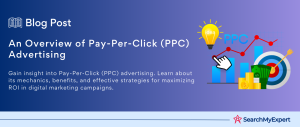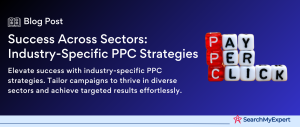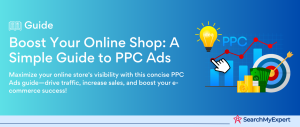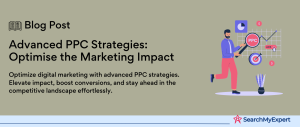PPC Ad Copywriting
Defining PPC Ad Copywriting
Pay-Per-Click (PPC) ad copywriting is a critical component of online marketing strategies. It involves crafting persuasive and compelling ad texts for online advertising platforms like Google Ads and Bing Ads. The essence of PPC ad copywriting lies in its ability to create immediate engagement and action from potential customers.
The Importance of PPC Ad Copywriting
The significance of PPC ad copywriting cannot be overstated. In the digital space, where attention spans are notoriously short, effective ad copy can be the difference between a click and a missed opportunity. PPC ads are often the first point of contact between a business and its potential customers. Therefore, the ad copy needs to make a powerful first impression.
Benefits of Effective PPC Ad Copywriting
- Increased Click-Through Rates (CTR):
Well-crafted ad copy attracts more clicks, driving traffic to your website. - Higher Conversion Rates: Compelling ad copy can persuade users to take the desired action, whether it’s making a purchase, signing up for a newsletter, or downloading a whitepaper.
- Improved Quality Score:
Google’s Quality Score is a measure of the relevance and quality of your PPC ads and keywords. High-quality ad copy can lead to a better Quality Score, which can lower your cost per click (CPC) and improve ad positioning. - Brand Awareness and Recall: Creative and memorable ad copy helps in building brand awareness and recall. It makes your brand more recognizable in a crowded online space.
- Targeting the Right Audience: Effective PPC ad copy ensures that your ads reach and resonate with your intended audience, maximising the return on investment (ROI).
Understanding Your Target Audience for PPC Ads
Identifying Your Ideal Customers’ Demographics
Understanding the demographics of your ideal customer is crucial for creating targeted PPC ad copy. Key demographic factors include:
- Age: Different age groups may have varying preferences and needs.
- Gender:
Gender can influence how individuals perceive and interact with ads. - Location: Geographical location can affect buying habits, language, and cultural references.
- Income Level: Income can determine purchasing power and interests.
- Education Level: This can influence the complexity and tone of the ad copy.
Understanding Needs, Pain Points, and Motivations
To connect effectively with your audience, you need to understand what drives them. This includes:
- Identifying Pain Points: What problems does your audience face that your product or service can solve?
- Understanding Motivations:
What are their goals and what drives their buying decisions? - Addressing Needs: How does your offering meet their specific needs?
Researching Online Behavior and Search Habits
Analysing online behaviour and search habits provides insights into:
- Preferred Platforms: Where does your target audience spend most of their time online?
- Search Queries: What are they searching for, and how can your ads answer these queries?
- Engagement Patterns:
What kind of content do they engage with the most?
Segmenting Your Audience
Dividing your audience into distinct groups based on shared characteristics allows for more personalised ad copy. Segments can be based on:
- Behavioural Factors: Purchasing behaviour, brand interactions, etc.
- Psychographic Factors:
Lifestyle, interests, values. - Custom Segments: Based on unique criteria relevant to your business.
Crafting Compelling Ad Headlines for PPC Campaigns
Capturing Attention with Strong Verbs and Relevant Keywords
The headline is often the first thing a potential customer sees, making its impact vital. Here’s how to make it count:
- Use of Strong Verbs: Verbs like ‘Discover,’ ‘Achieve,’ ‘Transform,’ and ‘Experience’ can energise your headline.
- Incorporating Relevant Keywords: Include keywords that your target audience is likely to use in their searches. This not only improves visibility but also ensures relevance.
Conveying Your Unique Selling Proposition (USP)
Your USP sets you apart from competitors. Your headline should highlight what makes your product or service unique. This might include:
- Exclusive Features: What does your product or service offer that others don’t?
- Special Offers:
Are you providing a unique deal or discount? - Expertise or Specialization:
Do you have unique expertise or specialisation in your field?
Creating a Sense of Urgency or Scarcity
Creating a sense of urgency or scarcity can encourage quick action. This could be through:
- Limited Time Offers: Indicate that a deal is available for a short period.
- Limited Quantity Alerts:
Suggesting limited availability can prompt immediate action.
Using Strong Emotional Triggers
Emotionally charged headlines can be more effective in capturing attention. Consider:
- Fear of Missing Out (FOMO): People don’t want to miss out on great opportunities.
- Happiness or Excitement: Positive emotions can be just as compelling.
- Problem-Solving:
Addressing a pain point can create a connection.
Writing Engaging Ad Descriptions for PPC Campaigns
Expanding on the Headline’s Message
An effective ad description builds upon the promise or intrigue created by the headline. Here’s how to effectively expand on your headline:
- Detailing the Offer: Provide more specifics about what the headline promises.
- Elaborating on Benefits: Go beyond features to explain how the product or service benefits the user.
Using Clear and Concise Language
Clarity and brevity are key in PPC ad copy. Your ad description should be:
- Straightforward: Avoid jargon or overly complex language.
- Concise: Keep it short and to the point to maintain the reader’s attention.
Highlighting Specific Benefits and Features
Focus on what sets your offering apart:
- Unique Features: What are the specific features that make your product or service unique?
- Real Benefits:
How do these features translate into real benefits for the user?
Including a Call to Action (CTA)
A clear CTA is crucial in guiding the user on what to do next. Ensure your CTA is:
- Action-Oriented: Use verbs like ‘Buy’, ‘Learn’, ‘Discover’, or ‘Sign-up’.
- Clear and Specific: Make it obvious what the user will get by clicking the ad.
Optimising Ad Extensions for Enhanced PPC Visibility
Utilising Sitelink Extensions
Sitelink extensions provide additional links to specific pages on your website. They are crucial for:
- Showcasing Key Pages: Direct potential customers to the most relevant pages, like product pages, contact forms, or special offers.
- Increasing Ad Real Estate: Larger ads are more visible and provide more information.
Leveraging Callout Extensions
Callout extensions are short, descriptive texts that highlight key selling points or offers. They are great for:
- Highlighting Unique Features: Showcase special features or services that differentiate you from competitors.
- Promoting Offers: Use them to draw attention to special deals or discounts.
Employing Structured Snippet Extensions
Structured snippet extensions provide specific details about your products or services. Use them to:
- List Product Categories:
Help users quickly understand the range of products or services you offer. - Showcase Services or Features:
Provide a quick glimpse of what you offer, such as ‘Types of Insurance: Vehicle, Home, Life’.
Using Location Extensions
Location extensions are vital for local businesses. They help by:
- Displaying Your Address:
Make it easier for local customers to find your physical store or office. - Improving Local Search Visibility: Enhance your presence in local search results, crucial for attracting local clientele.
Measuring and Refining PPC Ad Performance
Tracking Key Performance Indicators (KPIs)
To gauge the success of your PPC campaigns, it’s essential to monitor key metrics. Important KPIs include:
- Click-Through Rate (CTR):
Measures the effectiveness of your ad in generating clicks. - Conversion Rate: Assesses how often clicks on your ad result in a conversion.
- Quality Score:
Evaluates the quality and relevance of your ads and keywords. - Cost Per Conversion: Helps in understanding the cost-effectiveness of your ads.
Experimenting with Different Ad Variations
Variation is key to discovering what resonates with your audience. Experiment by:
- Altering Headlines: Test different headlines to see which ones capture more attention.
- Modifying Descriptions:
Change up the ad copy to find the most persuasive messaging. - Using Different Call-to-Actions (CTAs):
Assess which CTAs drive more conversions.
Utilising A/B Testing for Optimization
A/B testing, or split testing, is crucial for optimising PPC ads. Implement it by:
- Testing One Element at a Time:
Change either the headline, description, or CTA to isolate the impact of each change. - Comparing Results:
Analyse which version performs better in terms of CTR, conversion rate, and other relevant metrics.
Regularly Reviewing and Refining Ad Copy
Continuous improvement is key. Regularly:
- Review Performance Data:
Keep an eye on how your ads are performing over time. - Update Ad Copy:
Refresh your ads based on performance data and market trends. - Stay Informed on Industry Changes: Keep up with the latest PPC trends and adjust your strategies accordingly.
Ad Copywriting Best Practices for PPC Campaigns
Utilising Keyword-Rich Language
Incorporating relevant keywords into your PPC ad copy is essential for both visibility and relevance. Key practices include:
- Researching Keywords: Use tools like Google Keyword Planner to find keywords that your target audience is searching for.
- Including Long-Tail Keywords: These are more specific and often less competitive.
- Balancing Keyword Density: Ensure natural inclusion of keywords without overstuffing.
Keeping Ad Copy Clear, Concise, and Easy to Read
The clarity and readability of your ad copy directly impact its effectiveness. To achieve this:
- Use Simple Language: Avoid jargon and complex phrases.
- Be Direct:
Get to the point quickly to maintain the reader’s attention. - Use Bullet Points or Lists: Break down information for easier consumption.
Using Strong Visuals
Visual elements can significantly enhance the impact of your ad. Consider:
- Relevant Images: Choose images that complement and reinforce your ad message.
- Consistent Branding: Ensure visuals are in line with your brand identity.
- Attention-Grabbing Formats: Use formats like carousel or video ads to stand out.
Maintaining Consistency with Your Brand Voice and Messaging
Consistent branding across all platforms helps in building trust and recognition. Ensure that:
- Tone and Style Align: Your ad’s tone should match your overall brand voice.
- Message is Consistent:
The core message should be in line with your brand’s values and messaging across all channels.
Ensuring Ad Copy Aligns with Landing Page Content and Messaging
The transition from ad to landing page should be seamless. This involves:
- Matching Messages:
The promise made in the ad should be fulfilled on the landing page. - Consistent Design: Visuals and style on the landing page should align with the ad.
CONCLUSION
Mastering PPC ad copywriting involves a blend of strategic keyword usage, clear and concise messaging, strong visuals, consistent brand voice, and alignment with landing page content. By adhering to these best practices, you can craft compelling ad copy that not only captures attention but also drives conversions and enhances overall campaign success.
Connect with leading PPC Agencies for unbeatable results.
Table of Contents
Toggle






